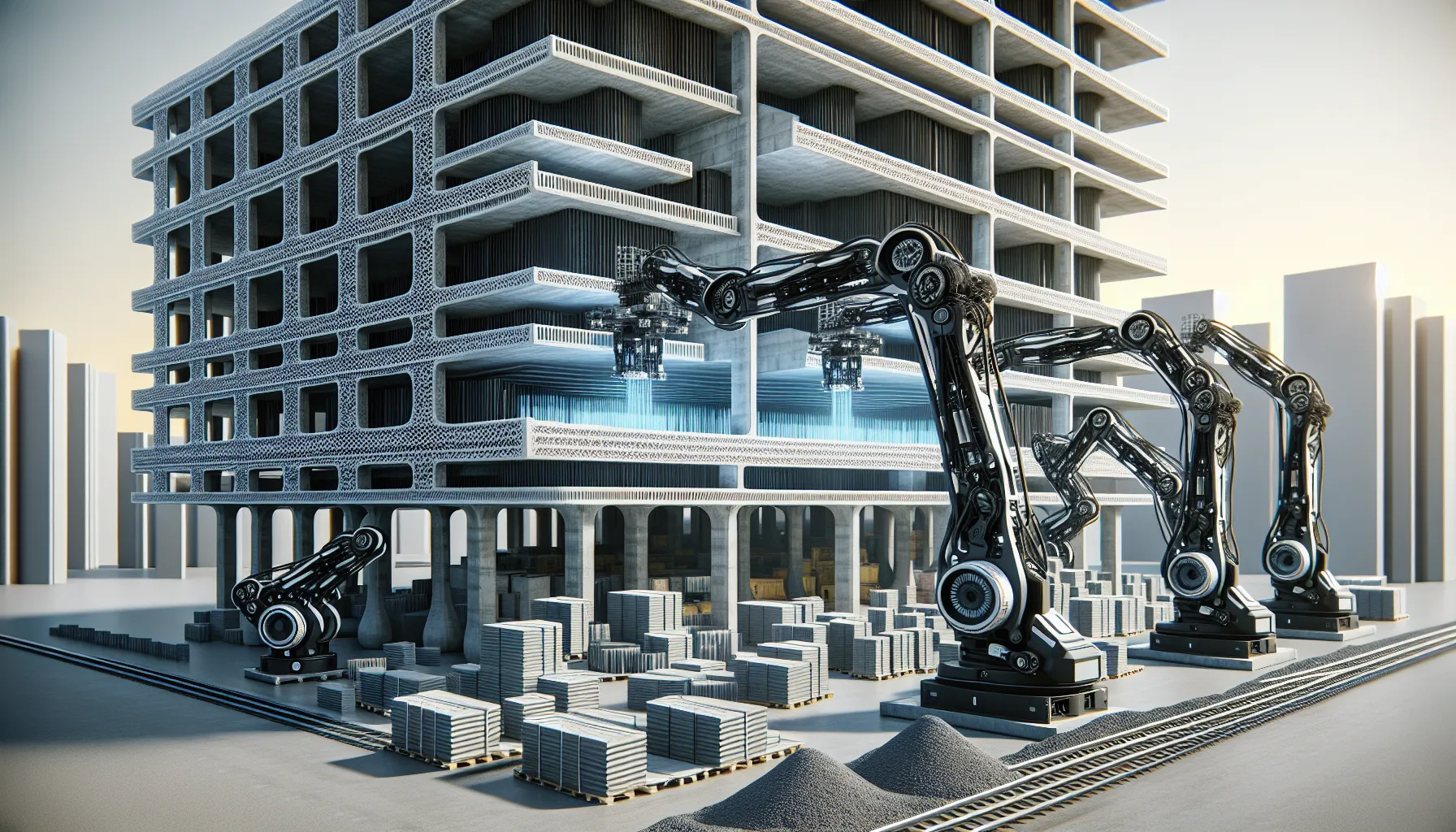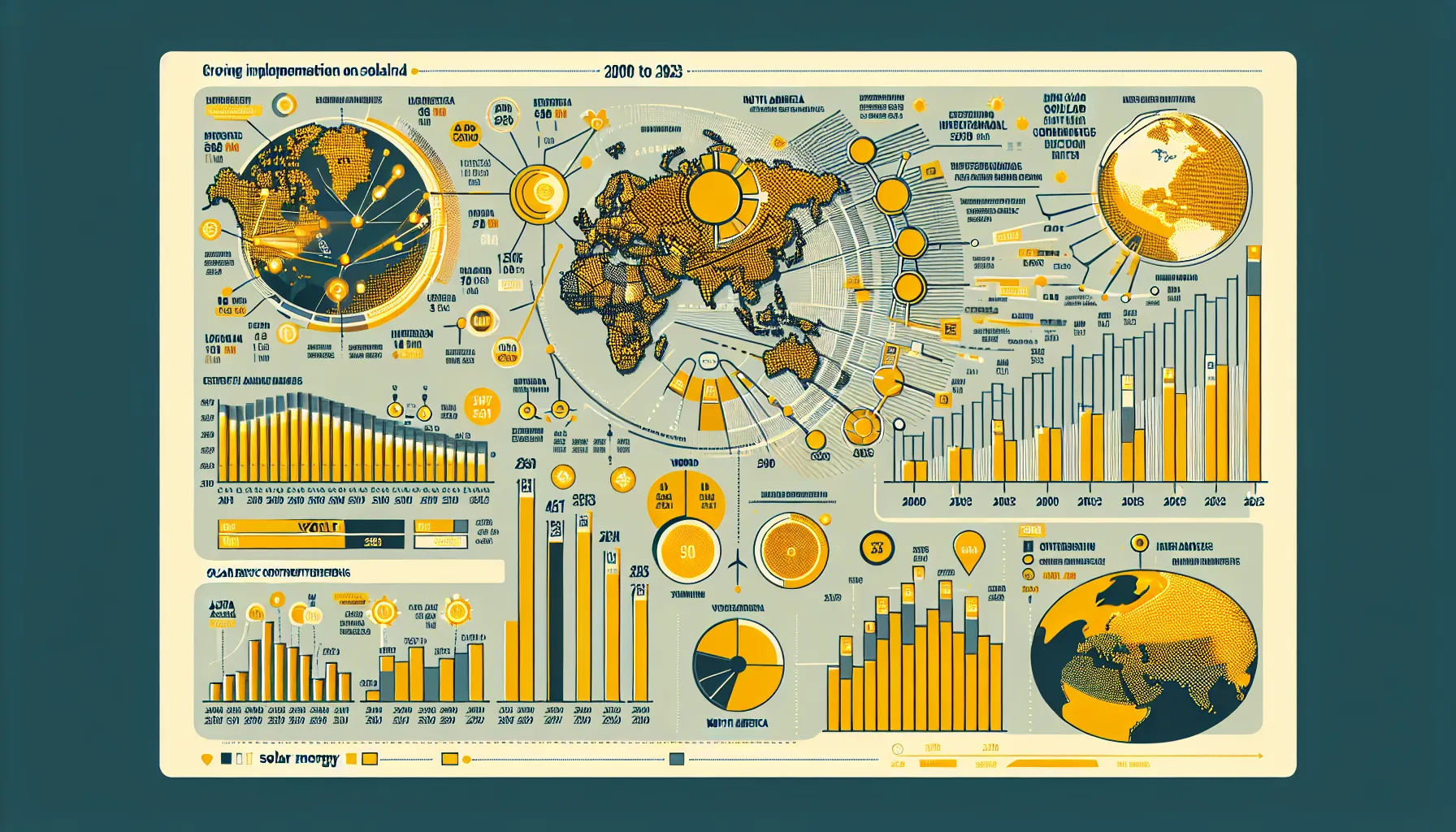As an experienced IELTS instructor, I’m excited to share a comprehensive IELTS Reading practice test focusing on the impact of automation on improving construction efficiency. This test will help you familiarize yourself with the IELTS Reading format and enhance your skills in tackling various question types. Let’s dive in!
Nội dung bài viết
- Introduction
- IELTS Reading Test
- Passage 1 – Easy Text
- The Rise of Automation in Construction
- Questions 1-6
- Questions 7-10
- Passage 2 – Medium Text
- Automation and Construction Efficiency: A Deeper Look
- Questions 11-15
- Questions 16-20
- Passage 3 – Hard Text
- The Transformative Power of Automation in Construction: Challenges and Future Prospects
- Questions 21-25
- Questions 26-30
- Answer Key
- Passage 1
- Passage 2
- Passage 3
Introduction
The construction industry is undergoing a significant transformation due to the implementation of automation technologies. This IELTS Reading practice test explores how automation is revolutionizing construction practices, increasing efficiency, and reshaping the future of the industry.
IELTS Reading Test
Passage 1 – Easy Text
The Rise of Automation in Construction
The construction industry has long been known for its labor-intensive practices and reliance on manual work. However, in recent years, a paradigm shift has occurred with the introduction of automation technologies. These advancements are transforming the way buildings are designed, constructed, and maintained.
One of the primary drivers of automation in construction is the need for increased efficiency. Traditional construction methods often face challenges such as project delays, cost overruns, and safety concerns. Automation offers solutions to these issues by streamlining processes and reducing human error.
Robotics plays a crucial role in this automation revolution. Robotic systems are now capable of performing tasks that were once exclusively done by human workers. For example, bricklaying robots can lay bricks with incredible precision and speed, significantly reducing construction time. Similarly, 3D printing technology is being used to create entire buildings, layer by layer, with minimal human intervention.
 3D printed building
3D printed building
Another area where automation is making a significant impact is in project management. Building Information Modeling (BIM) software allows architects, engineers, and contractors to collaborate on a digital platform, creating detailed 3D models of buildings before construction begins. This technology helps identify potential issues early in the design phase, reducing costly mistakes and rework during construction.
The use of drones in construction has also become increasingly common. These unmanned aerial vehicles are used for site surveys, progress monitoring, and safety inspections. Drones equipped with high-resolution cameras and sensors can quickly gather data that would take human workers much longer to collect manually.
While the benefits of automation in construction are clear, it’s important to note that human workers still play a vital role. The integration of automation technologies requires skilled professionals to operate, maintain, and oversee these systems. As such, the construction industry is evolving to require a workforce with a mix of traditional skills and technological expertise.
As we look to the future, it’s evident that automation will continue to shape the construction industry. From artificial intelligence optimizing project schedules to autonomous vehicles transporting materials on-site, the possibilities are vast. The impact of automation on improving construction efficiency is undeniable, promising a future where buildings are constructed faster, safer, and with greater precision than ever before.
Questions 1-6
Do the following statements agree with the information given in the reading passage?
Write
TRUE if the statement agrees with the information
FALSE if the statement contradicts the information
NOT GIVEN if there is no information on this
- The construction industry has always been quick to adopt new technologies.
- Automation in construction helps reduce project delays and cost overruns.
- Bricklaying robots work faster than human bricklayers.
- Building Information Modeling software is only used by architects.
- Drones are used in construction primarily for marketing purposes.
- The introduction of automation has eliminated the need for human workers in construction.
Questions 7-10
Complete the sentences below.
Choose NO MORE THAN TWO WORDS from the passage for each answer.
- 3D printing technology can be used to construct __ with minimal human involvement.
- The use of __ in construction allows for early identification of potential issues in the design phase.
- __ equipped with cameras and sensors can gather data much faster than human workers.
- The future of construction may include __ transporting materials around construction sites.
Passage 2 – Medium Text
Automation and Construction Efficiency: A Deeper Look
The integration of automation into the construction industry has been a game-changer, revolutionizing traditional practices and significantly boosting efficiency. This transformation is not merely about replacing human labor with machines; it’s about creating a synergy between human expertise and technological capabilities to achieve unprecedented levels of productivity and quality in construction projects.
One of the most impactful areas where automation has made strides is in the realm of prefabrication and modular construction. This approach involves manufacturing building components off-site in a controlled factory environment, then transporting them to the construction site for assembly. Automated manufacturing processes in these factories ensure high precision and consistency in the production of building elements. The result is a dramatic reduction in on-site construction time, minimized waste, and improved quality control.
Another significant advancement is the use of autonomous machinery on construction sites. Self-driving excavators, bulldozers, and cranes are becoming increasingly common. These machines, guided by GPS and equipped with advanced sensors, can perform repetitive tasks with a level of accuracy that surpasses human capabilities. They can work around the clock, in various weather conditions, significantly speeding up the construction process while reducing the risk of accidents caused by human fatigue.
The implementation of artificial intelligence (AI) and machine learning in construction project management has also led to substantial efficiency gains. AI algorithms can analyze vast amounts of data from past projects to predict potential issues, optimize resource allocation, and generate more accurate project timelines. This predictive capability allows project managers to make informed decisions, mitigate risks proactively, and keep projects on track and within budget.
Internet of Things (IoT) devices are another technological innovation enhancing construction efficiency. These interconnected sensors can monitor various aspects of a construction site in real-time, from equipment performance to environmental conditions. This constant stream of data enables better decision-making and allows for predictive maintenance of machinery, reducing downtime and extending equipment lifespan.
The use of virtual and augmented reality (VR/AR) in construction has opened up new possibilities for design visualization and problem-solving. Architects and engineers can use VR to walk through a building before it’s built, identifying potential issues and making improvements in the design phase. AR, on the other hand, can overlay digital information onto the real world, assisting workers in tasks such as installation and maintenance.
While the benefits of automation in construction are clear, it’s important to address the challenges that come with this technological shift. The initial investment in automated systems can be substantial, and there’s a learning curve associated with implementing new technologies. Additionally, there are concerns about job displacement as some roles become automated.
However, the construction industry is adapting by creating new job roles that require a blend of traditional construction knowledge and technological skills. Upskilling and reskilling programs are becoming increasingly important to ensure that the workforce can effectively work alongside automated systems.
Looking ahead, the future of construction appears to be one where automation and human expertise coexist and complement each other. As technologies continue to evolve, we can expect to see even greater improvements in construction efficiency, leading to faster project completion times, reduced costs, and buildings of higher quality and sustainability.
Questions 11-15
Choose the correct letter, A, B, C, or D.
-
According to the passage, prefabrication in construction:
A) Increases on-site construction time
B) Reduces waste and improves quality control
C) Is less precise than traditional methods
D) Is only suitable for small-scale projects -
Autonomous machinery in construction:
A) Can only work in ideal weather conditions
B) Is less accurate than human workers
C) Can work continuously and improve safety
D) Is not yet commonly used on construction sites -
The use of AI in construction project management:
A) Is limited to small data sets
B) Cannot predict potential issues
C) Helps in making informed decisions and mitigating risks
D) Is only useful for budget management -
IoT devices in construction:
A) Only monitor equipment performance
B) Provide real-time data for better decision-making
C) Are not connected to each other
D) Increase equipment downtime -
The main challenge in implementing automation in construction is:
A) The lack of suitable technologies
B) Resistance from workers
C) The high initial investment and learning curve
D) Decreased project quality
Questions 16-20
Complete the summary below.
Choose NO MORE THAN TWO WORDS from the passage for each answer.
Automation in the construction industry is creating a synergy between human expertise and (16) __ to achieve unprecedented levels of productivity. Technologies such as (17) __ allow for the visualization of buildings before they are constructed. While automation brings many benefits, there are concerns about (18) __ as some roles become automated. The industry is responding by creating new job roles that require a mix of traditional knowledge and (19) __. The future of construction is likely to see automation and human expertise (20) __ each other, leading to improved efficiency and quality in construction projects.
Passage 3 – Hard Text
The Transformative Power of Automation in Construction: Challenges and Future Prospects
The construction industry, long characterized by its traditional methodologies and resistance to change, is undergoing a profound transformation driven by automation technologies. This shift is not merely an incremental improvement but a paradigm-altering revolution that promises to redefine the very essence of how we conceive, design, and build our infrastructure and living spaces.
At the forefront of this revolution is the concept of digital twins, virtual replicas of physical assets that serve as a bridge between the digital and physical worlds. These sophisticated models integrate real-time data from sensors embedded in physical structures, allowing for unprecedented levels of monitoring, predictive maintenance, and optimization. The implications of this technology extend far beyond the construction phase, offering a holistic approach to asset management throughout a building’s entire lifecycle.
The integration of machine learning algorithms with Building Information Modeling (BIM) has given rise to what some industry experts are calling “BIM 2.0”. This advanced system can analyze vast datasets from previous projects, environmental factors, and regulatory requirements to generate optimized designs automatically. It can predict potential conflicts and inefficiencies in the construction process, suggesting alternatives that can save time, reduce costs, and enhance sustainability.
The emergence of swarm robotics in construction represents another leap forward in automation. Inspired by the collective behavior of social insects, swarm robotics involves the coordination of multiple simple robots to perform complex tasks. In construction, this could manifest as teams of small robots working in concert to build structures with a level of precision and speed unattainable by human workers or traditional machinery.
 Swarm robots building
Swarm robots building
However, the path to full automation in construction is not without its challenges. One significant hurdle is the inherent variability of construction environments. Unlike controlled factory settings, construction sites are dynamic, often unpredictable, and subject to myriad external factors. Developing automation systems that can adapt to these changing conditions requires sophisticated AI and sensor technologies that are still in their infancy.
Moreover, the integration of automated systems with existing infrastructure and workflows presents a complex challenge. Many construction firms operate with legacy systems and established processes that are not easily compatible with cutting-edge automation technologies. The industry must grapple with the task of modernizing its digital infrastructure to fully leverage the potential of automation.
The ethical and societal implications of widespread automation in construction cannot be overlooked. While automation promises increased efficiency and safety, it also raises questions about job displacement and the changing nature of work in the industry. There is a pressing need for a comprehensive approach to reskilling and upskilling the construction workforce to ensure that human workers can adapt to and thrive in an increasingly automated environment.
Looking to the future, the concept of self-healing buildings represents the pinnacle of automation in construction. These structures, embedded with smart materials and nano-robots, would be capable of detecting and repairing damage autonomously. While still in the realm of theoretical research, such technologies hint at a future where buildings are not static entities but dynamic, responsive systems that evolve and adapt over time.
The convergence of automation with other emerging technologies such as 5G networks, edge computing, and advanced materials science is set to accelerate the pace of innovation in construction. This synergy will likely give rise to new construction methodologies that are currently beyond our imagination.
In conclusion, the impact of automation on improving construction efficiency is profound and far-reaching. As we stand on the cusp of this technological revolution, it is clear that the construction industry of the future will bear little resemblance to its current form. The challenge lies not just in developing these technologies but in fostering a culture of innovation and adaptability within the industry. Those who can successfully navigate this transition will be well-positioned to lead in an era where the boundaries between the digital and physical worlds in construction become increasingly blurred.
Questions 21-25
Choose the correct letter, A, B, C, or D.
-
According to the passage, digital twins in construction:
A) Are physical replicas of digital models
B) Only useful during the construction phase
C) Integrate real-time data for ongoing asset management
D) Replace the need for physical sensors in buildings -
The concept of “BIM 2.0” refers to:
A) A new version of traditional Building Information Modeling
B) The integration of machine learning with BIM
C) A system exclusively for design optimization
D) A tool for financial management in construction projects -
Swarm robotics in construction is inspired by:
A) Human teamwork
B) Traditional machinery
C) The behavior of social insects
D) Digital twin technology -
One of the main challenges in automating construction is:
A) The lack of suitable technologies
B) Resistance from construction workers
C) The variability of construction environments
D) The high cost of robots -
The passage suggests that self-healing buildings:
A) Are already being constructed
B) Are a theoretical concept for the future
C) Can only repair minor damages
D) Will replace all traditional buildings soon
Questions 26-30
Complete the sentences below.
Choose NO MORE THAN THREE WORDS from the passage for each answer.
-
The construction industry is undergoing a __ that will redefine how we approach building projects.
-
The integration of automated systems with __ presents a complex challenge for many construction firms.
-
To address job displacement concerns, there is a need for a comprehensive approach to __ the construction workforce.
-
The convergence of automation with technologies like 5G and __ is expected to accelerate innovation in construction.
-
The future of construction will likely see the boundaries between the __ become increasingly blurred.
Answer Key
Passage 1
- FALSE
- TRUE
- TRUE
- FALSE
- NOT GIVEN
- FALSE
- entire buildings
- BIM software
- Drones
- autonomous vehicles
Passage 2
- B
- C
- C
- B
- C
- technological capabilities
- virtual reality
- job displacement
- technological skills
- coexist and complement
Passage 3
- C
- B
- C
- C
- B
- paradigm-altering revolution
- existing infrastructure and workflows
- reskilling and upskilling
- edge computing
- digital and physical worlds
This IELTS Reading practice test on the impact of automation on improving construction efficiency covers various aspects of the topic, from basic concepts to advanced applications. It showcases how automation is transforming the construction industry, improving efficiency, and presenting new challenges and opportunities.
For more insights into how technology is changing various industries, you might be interested in reading about how automation is transforming the construction industry or how smart cities are improving quality of life. These articles provide additional context on the broader impact of technological advancements in our built environment.
Remember, practicing with diverse texts and question types is key to improving your IELTS Reading skills. Keep refining your time management and skimming/scanning techniques to boost your performance in the actual test. Good luck with your IELTS preparation!


